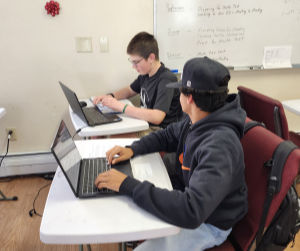Students share what they learned during JRHS Dissection Project Class
- Jeff Philbrick

- Feb 12, 2021
- 2 min read
By Karen Trudeau, Faculty

This January I worked with a group of 8 students in the Dissection Project Class. These students were from every grade in the school and they all worked well together. We met through the month of January, and this gave them the opportunity to observe specimens from several different Phylla. The observation of different specimens allowed them to see how similar and how different many of these animals are. They also were able to learn more about animals that they didn’t know much about previously. They dissected an earthworm, starfish, clam and perch. They also compared the grasshopper and the crayfish which are both arthropods. They finished the class by dissecting frogs and rats which have organs and structures that are very similar to those of humans.
Here are some of the comments that the students made about what they learned:

All organisms have similar parts and organs.
Not everything is visible but it is there. Some things are hard to find. I thought it would be easier to find the parts.
I didn’t realize how complicated it all is. Everything is attached to other parts and not just floating around inside.
I liked the rat dissection, but the earthworm was my favorite.
The rat was the hardest but it is so similar to the human body which is an inspiration.
I learned the placement of the organs: Lungs, liver, heart. I didn’t know where these things were before.

I learned how similar animals’ organs are to ours, how really important internal structures are that are small, yet they have a big impact. The starfish was also my favorite!
I learned how “simple” organisms are actually quite complicated. For example, the grasshopper is complex in how the eyes work and how the exoskeleton is so different.
I liked the starfish because it was easy to see all of the parts. The rat was also very clear to dissect. It wasn’t difficult to see all of the organs.
I like the progression of dissections from simple to more complex and similar to humans.

The worms were segmented. The organs of the starfish were easy to distinguish and they were easy to remove, and the water vascular system was cool!
I can apply a lot of this to what we just learned in our Anatomy class. The muscles were similar and had many of the same names as the human muscles.
Covid prevented us from doing dissections last year in Biology, and this has given us the opportunity to dissect the specimens we missed.
Overall, this was a very motivated class. Several expressed interest in possible careers in the medical field and it was apparent that there might be a surgeon or two in the making! What a great way to learn more about God and His amazing Creation

.png)































Comments